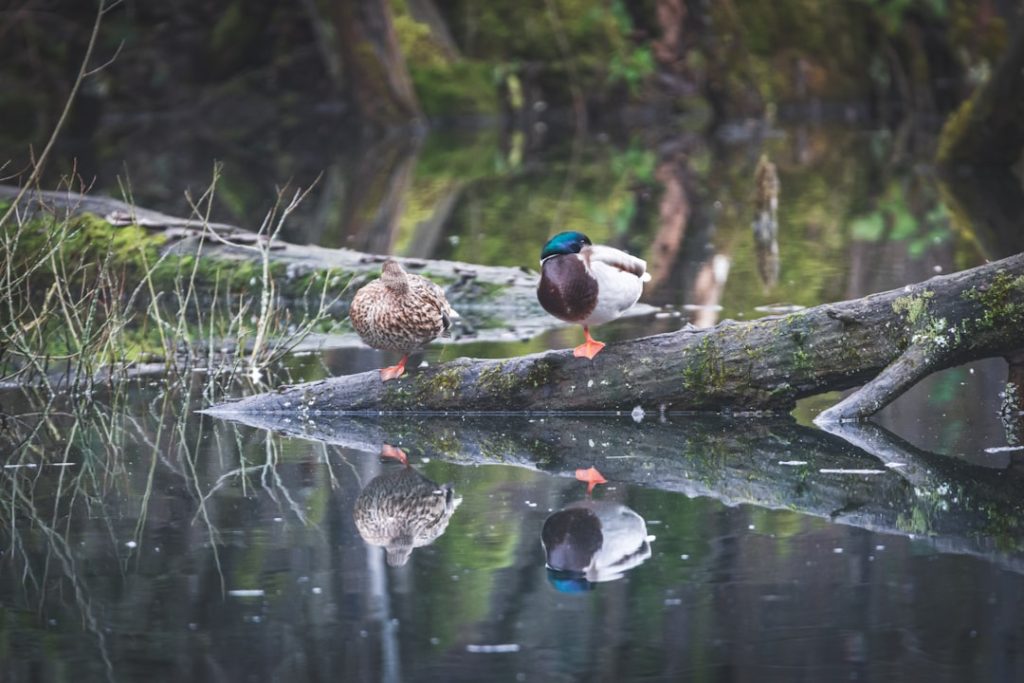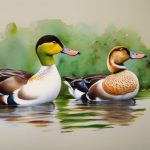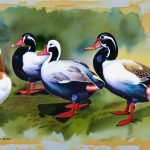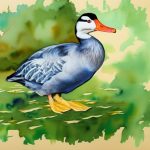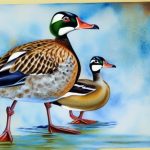Ducks have been domesticated for thousands of years, with evidence of their domestication dating back to ancient Egypt and China. The first domesticated ducks were likely descended from wild mallards, and over time, different breeds were developed for various purposes, such as egg production, meat, or ornamental purposes. In ancient China, ducks were raised for their meat and eggs, and the Chinese were the first to develop specific breeds for these purposes. In Europe, ducks were also domesticated for their meat and eggs, and different breeds were developed to suit the needs of different regions and climates.
The domestication of ducks spread to other parts of the world, including the Americas, where indigenous peoples also raised ducks for food and feathers. In the 19th and 20th centuries, duck breeding became more specialized, with breeders focusing on developing specific traits and characteristics in different breeds. Today, there are hundreds of different domesticated duck breeds, each with its own unique history and characteristics. From the humble mallard to the showy Indian Runner, domesticated duck breeds have a rich and diverse history that spans the globe.
Table of Contents
Key Takeaways
- Domesticated duck breeds have a long history, dating back to ancient times when they were first domesticated in Asia.
- Popular domesticated duck breeds include the Pekin, Khaki Campbell, and Indian Runner, each with their own unique characteristics and traits.
- Domesticated duck breeds are known for their hardiness, adaptability, and friendly disposition, making them great pets and productive egg layers.
- Caring for domesticated duck breeds involves providing a suitable living environment, proper nutrition, and regular health checks to ensure their well-being.
- Domesticated duck breeds are used for various purposes, including egg and meat production, pest control, and as show birds, making them a versatile addition to any farm or homestead.
Popular Domesticated Duck Breeds
There are many popular domesticated duck breeds, each with its own unique characteristics and traits. Some of the most popular breeds include the Pekin, which is known for its large size and excellent meat production. The Pekin duck is a favorite among commercial duck farmers due to its fast growth rate and high feed conversion ratio. Another popular breed is the Khaki Campbell, which is prized for its high egg production and calm temperament. The Khaki Campbell is a favorite among backyard duck keepers for its friendly nature and prolific egg-laying abilities.
Other popular domesticated duck breeds include the Indian Runner, which is known for its upright stance and excellent foraging abilities. The Indian Runner is a favorite among small-scale farmers and homesteaders for its ability to thrive on pasture and produce large numbers of eggs. The Muscovy duck is another popular breed, known for its unique appearance and excellent meat quality. Muscovy ducks are often raised for their lean, flavorful meat and are a favorite among gourmet chefs. These are just a few examples of the many popular domesticated duck breeds that can be found around the world.
Characteristics and Traits of Domesticated Duck Breeds
Domesticated duck breeds come in a wide variety of shapes, sizes, and colors, each with its own unique characteristics and traits. Some breeds are known for their excellent egg-laying abilities, while others are prized for their meat production or ornamental qualities. For example, the Khaki Campbell is known for its exceptional egg-laying abilities, with some hens laying up to 300 eggs per year. This makes them a favorite among small-scale farmers and backyard duck keepers who are looking for a reliable source of fresh eggs.
On the other hand, breeds like the Pekin and Muscovy are prized for their meat production, with Pekin ducks being known for their large size and fast growth rate, while Muscovy ducks are valued for their lean, flavorful meat. Other breeds, such as the Indian Runner, are known for their excellent foraging abilities and ability to thrive on pasture. In addition to their practical qualities, many domesticated duck breeds also have ornamental value, with a wide range of colors and patterns to choose from. From the striking black and white markings of the Magpie duck to the iridescent green plumage of the Cayuga, domesticated duck breeds offer a wide range of options for those looking to add beauty and diversity to their flock.
Caring for Domesticated Duck Breeds
Caring for domesticated duck breeds requires attention to their specific needs and requirements. Ducks need access to water for bathing and drinking, as well as plenty of space to roam and forage. They also require protection from predators and shelter from the elements. Providing a balanced diet that includes a mix of grains, greens, and protein is essential for maintaining the health and well-being of domesticated duck breeds.
Ducks also need regular access to fresh water for bathing and swimming, as this helps to keep their feathers clean and in good condition. In addition to their physical needs, ducks also require social interaction and mental stimulation to thrive. Providing a stimulating environment with plenty of opportunities for exploration and play can help to keep ducks happy and healthy. Regular health checks and vaccinations are also important for preventing disease and maintaining the overall well-being of domesticated duck breeds.
Uses of Domesticated Duck Breeds
Domesticated duck breeds have a wide range of uses, including egg production, meat production, pest control, and ornamental purposes. Many duck breeds are valued for their excellent egg-laying abilities, with some hens laying up to 300 eggs per year. Duck eggs are prized for their rich flavor and nutritional value, making them a popular choice among home cooks and bakers. In addition to their eggs, ducks are also raised for their meat, which is lean, flavorful, and versatile in the kitchen.
Ducks are also valued for their ability to control pests in gardens and on farms. Their voracious appetites make them excellent at controlling slugs, snails, and other garden pests, making them a valuable addition to any integrated pest management plan. In addition to their practical uses, many domesticated duck breeds are also kept for ornamental purposes, with their striking colors and patterns adding beauty and diversity to flocks and homesteads.
Breeding and Reproduction of Domesticated Duck Breeds
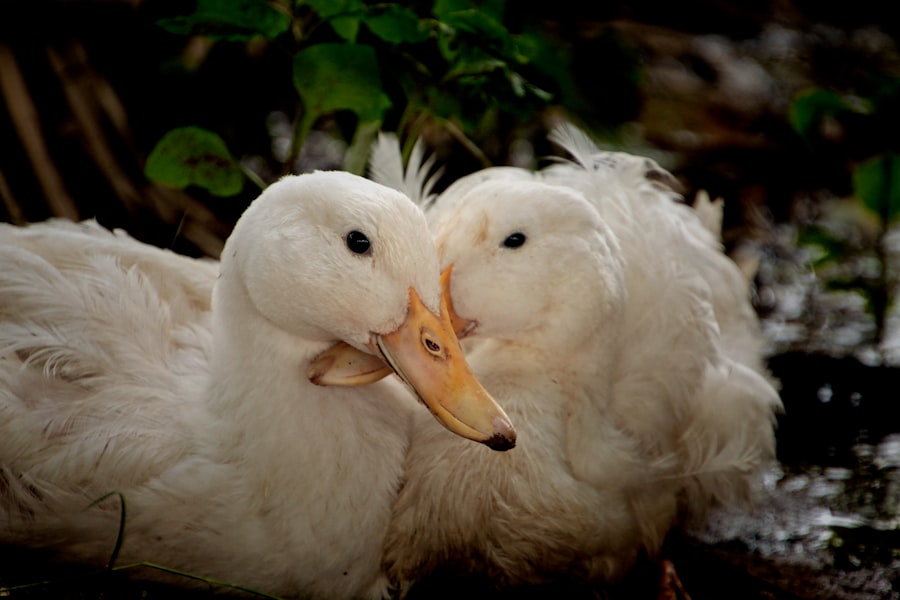
Breeding domesticated duck breeds requires careful selection of breeding stock and attention to their specific reproductive needs. Ducks reach sexual maturity at around 5-7 months of age, at which point they can begin breeding. Providing a suitable nesting area with plenty of bedding material is essential for encouraging ducks to lay eggs. Once eggs are laid, they should be collected daily to prevent them from being damaged or eaten by predators.
Incubating duck eggs can be done using an incubator or by allowing a broody hen to sit on them. Ducklings hatch after around 28 days of incubation and require warmth, protection, and access to water as soon as they hatch. Providing a balanced diet that includes plenty of protein is essential for supporting the growth and development of young ducklings. Careful attention should be paid to the health and well-being of breeding ducks and their offspring to ensure successful reproduction and healthy offspring.
Challenges and Considerations of Raising Domesticated Duck Breeds
Raising domesticated duck breeds comes with its own set of challenges and considerations that need to be taken into account. Ducks require access to water for bathing and drinking, which can create challenges in terms of managing water quality and preventing water-related diseases. Ducks are also susceptible to predators such as foxes, raccoons, and birds of prey, so providing adequate protection from predators is essential for keeping ducks safe.
Another consideration when raising domesticated duck breeds is managing their waste, as ducks produce a significant amount of manure that needs to be managed properly to prevent environmental contamination. Ducks also require regular health checks and vaccinations to prevent disease and maintain their overall well-being. Providing a balanced diet that meets their nutritional needs can also be challenging, especially for those raising ducks in more confined spaces.
In conclusion, domesticated duck breeds have a rich history that spans thousands of years and encompasses a wide range of uses and characteristics. From their humble beginnings as descendants of wild mallards to the diverse array of breeds found around the world today, ducks have played an important role in human history as sources of food, feathers, pest control, and ornamental beauty. Caring for domesticated duck breeds requires attention to their specific needs and requirements, including access to water, space to roam, protection from predators, a balanced diet, social interaction, mental stimulation, regular health checks, vaccinations, and careful breeding practices. Despite the challenges involved in raising domesticated duck breeds, they continue to be valued for their practical uses as well as their beauty and diversity in flocks and homesteads around the world.
If you’re interested in learning more about domesticated duck breeds, you might also want to check out this informative article on the best kind of coop for chickens at PoultryWizard. Understanding the different coop options can help you create a suitable and comfortable environment for your ducks as well.
FAQs
What are domesticated duck breeds?
Domesticated duck breeds are ducks that have been selectively bred by humans for specific traits such as egg production, meat quality, or ornamental purposes.
What are some popular domesticated duck breeds?
Some popular domesticated duck breeds include the Pekin, Khaki Campbell, Indian Runner, and Rouen. These breeds are known for their productivity, adaptability, and docile nature.
What are the uses of domesticated duck breeds?
Domesticated duck breeds are primarily used for egg and meat production. Some breeds are also kept for ornamental purposes due to their unique and attractive appearances.
What are the characteristics of domesticated duck breeds?
Domesticated duck breeds can vary in size, color, and temperament. They are generally hardy, adaptable to various climates, and have a high reproductive capacity.
How are domesticated duck breeds different from wild ducks?
Domesticated duck breeds have been selectively bred for specific traits, while wild ducks have evolved naturally in their native habitats. Domesticated ducks also rely on humans for food and shelter, whereas wild ducks are self-sufficient in the wild.
Meet Walter, the feathered-friend fanatic of Florida! Nestled in the sunshine state, Walter struts through life with his feathered companions, clucking his way to happiness. With a coop that’s fancier than a five-star hotel, he’s the Don Juan of the chicken world. When he’s not teaching his hens to do the cha-cha, you’ll find him in a heated debate with his prized rooster, Sir Clucks-a-Lot. Walter’s poultry passion is no yolk; he’s the sunny-side-up guy you never knew you needed in your flock of friends!

